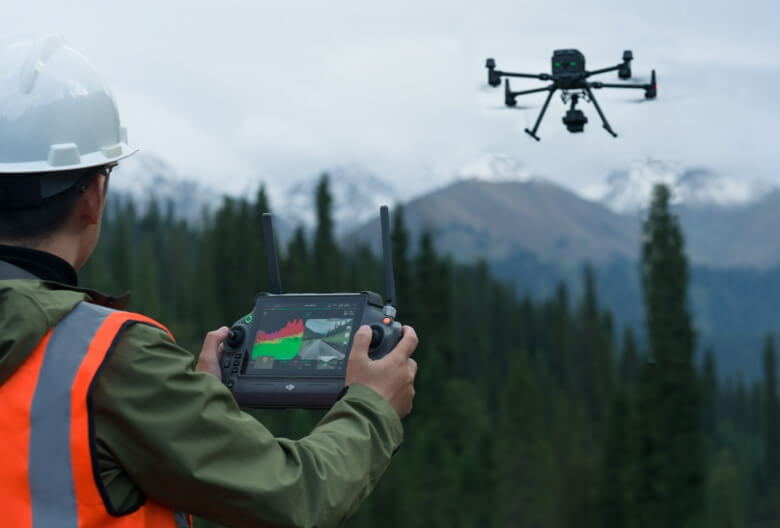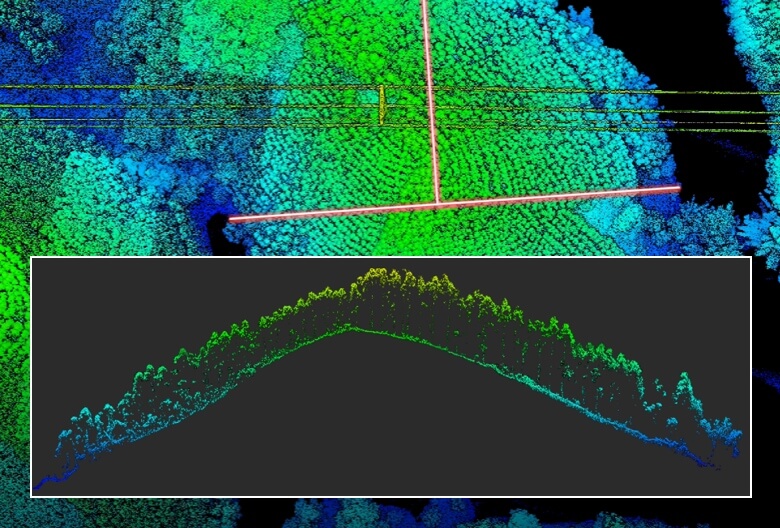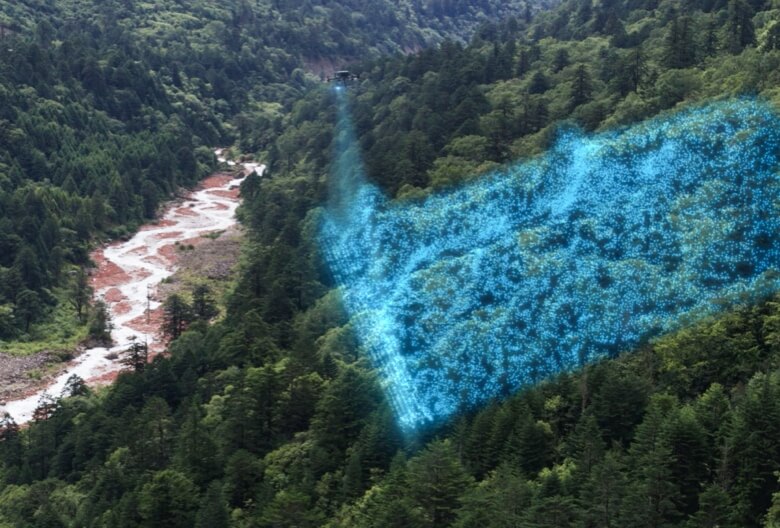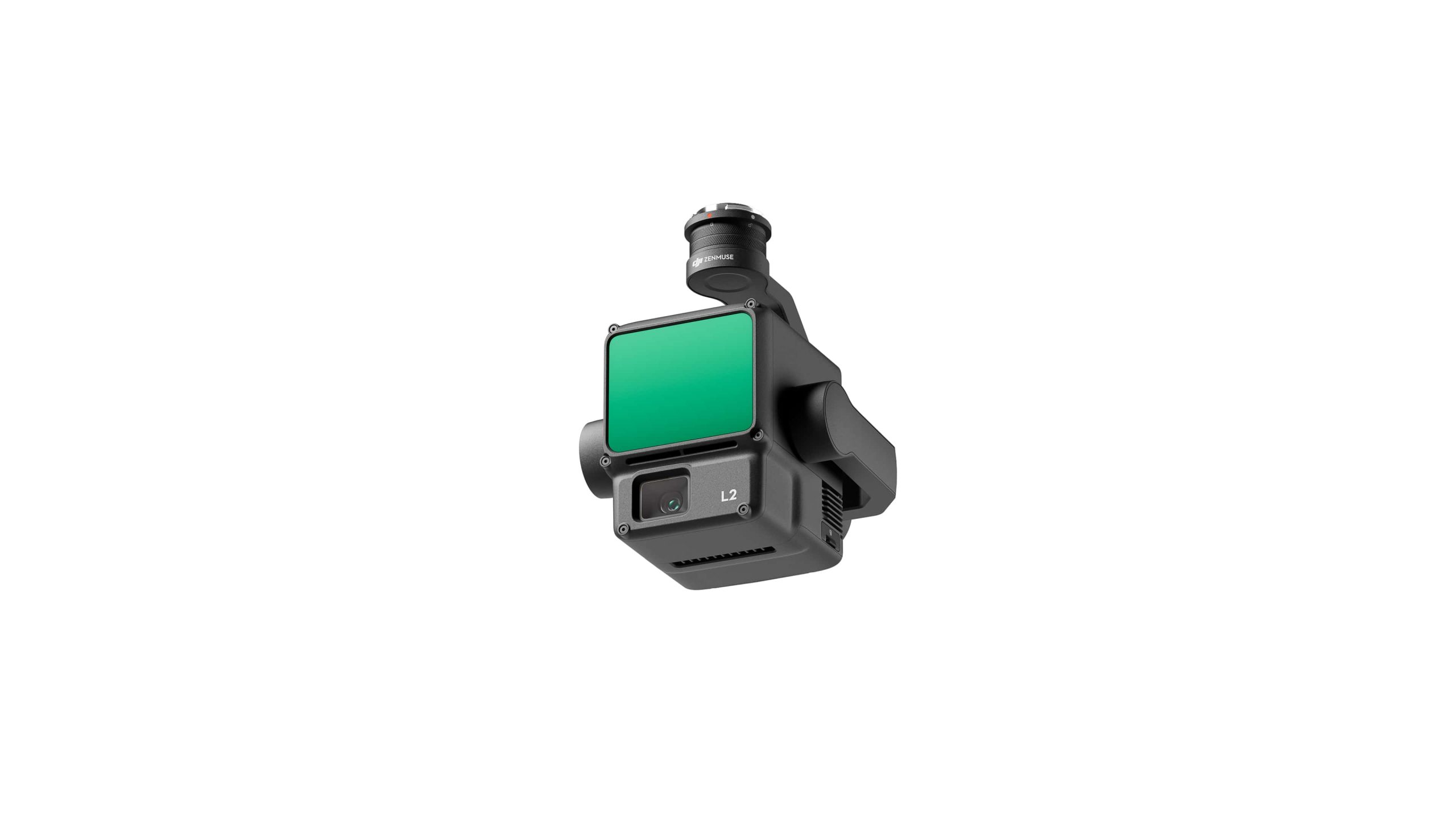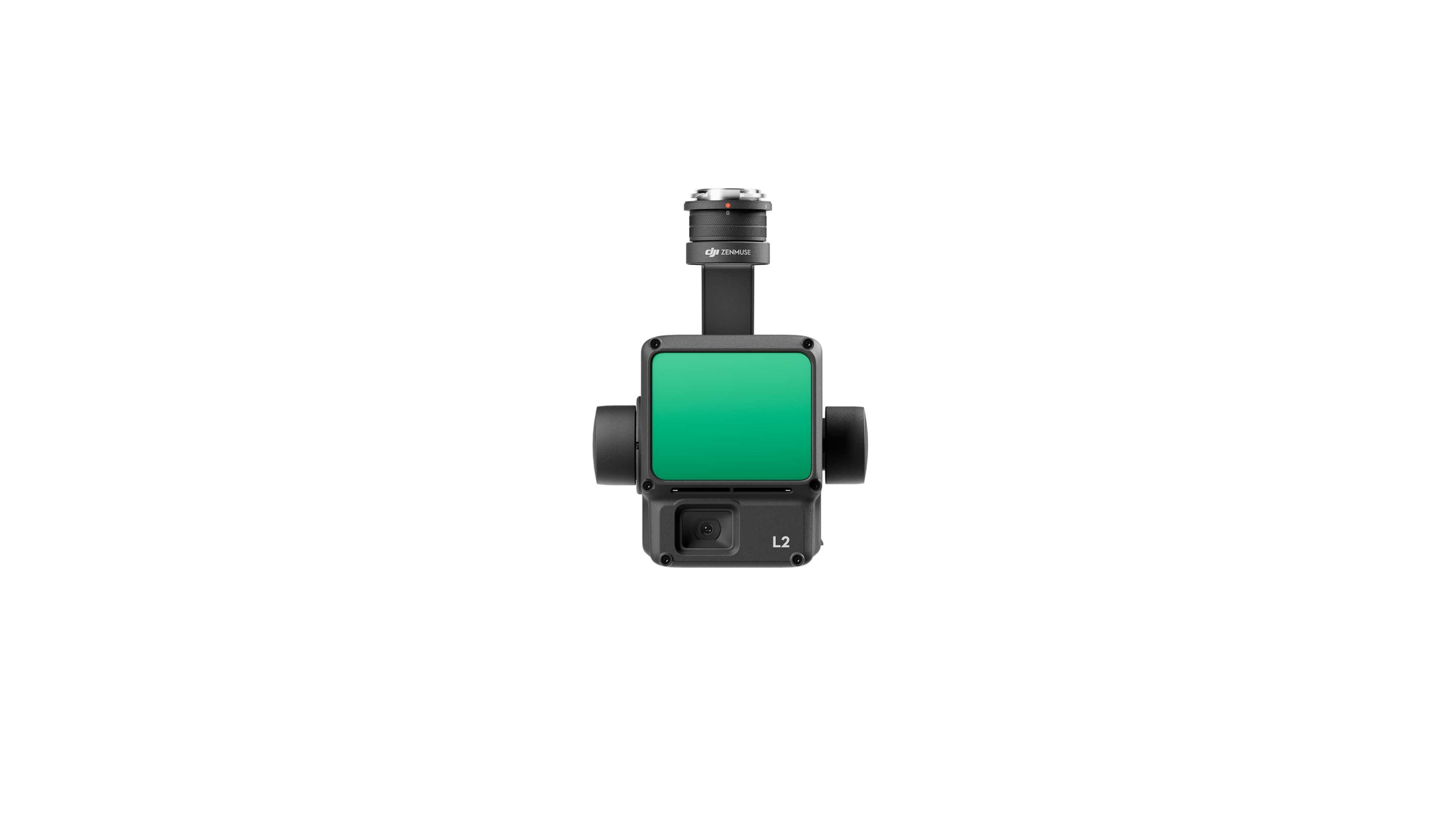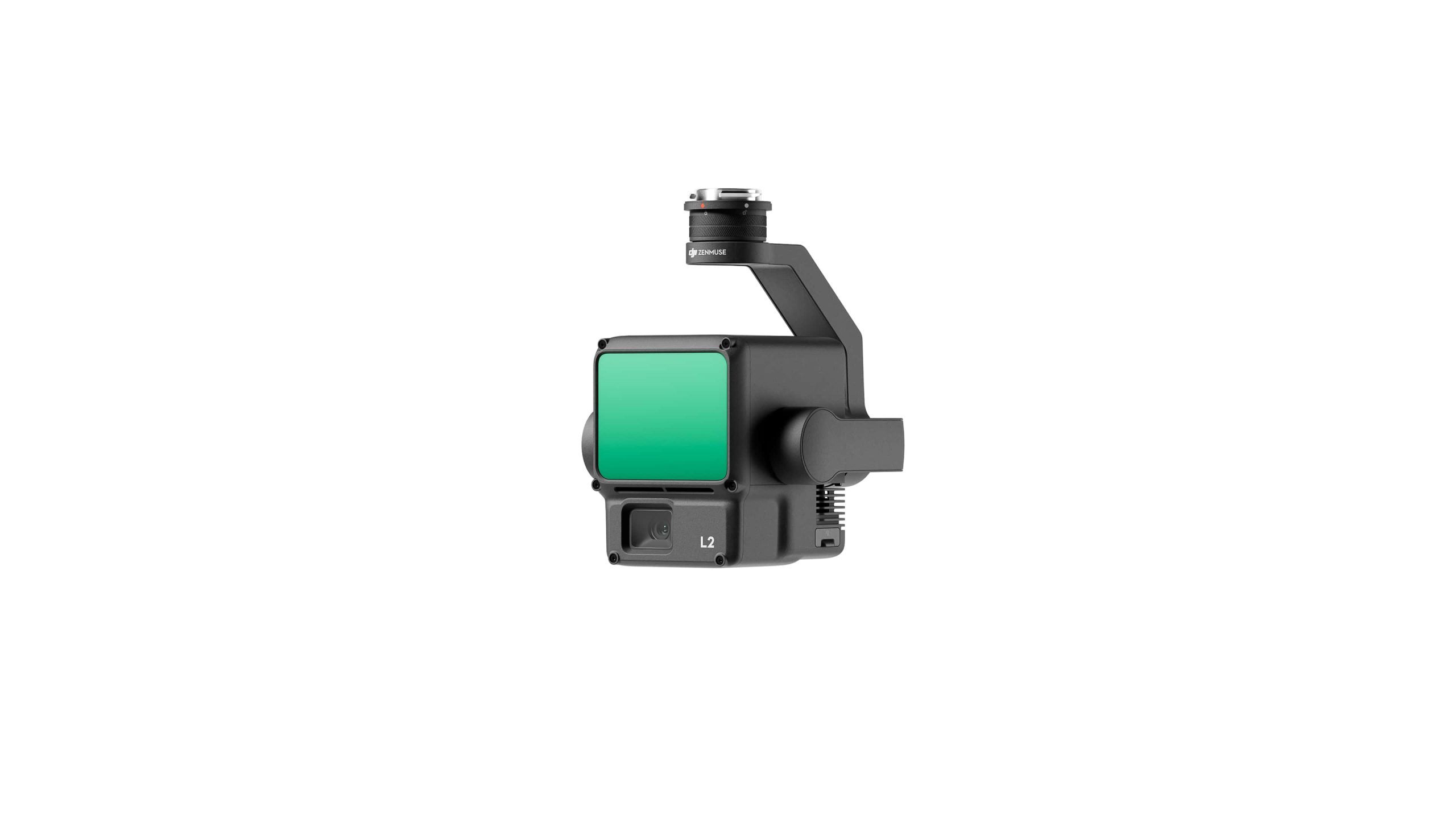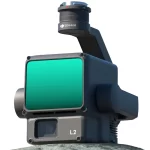The Zenmuse L2 boasts a 30% increase in detection range, detecting objects from 250 meters at 10% reflectivity and 100k Lux and up to 450 meters at 50% reflectivity and 0k Lux[1] in comparison to its predecessor the Zenmuse L1. The typical operational altitude now extends up to 150 meters, notably enhancing operational safety and efficiency.
With a reduced spot size of 4×12 cm @100m, only a fifth of that of the Zenmuse L1, the Zenmuse L2 not only detects smaller objects with more details, generating more accurate digital elevation models (DEM) but supports five returns, capable of penetrating denser vegetation and capturing more ground points beneath the foliage.
In both single and multiple return modes, Zenmuse L2 can reach a max point cloud emission rate of 240,000 points per second, allowing the acquisition of more point cloud data in a given time frame.
The sensors RGB mapping camera features a 4/3 CMOS with a mechanical shutter and enlarged pixel size to 3.3 μm. The effective pixels now reach 20 MP, resulting in a significant improvement in overall imaging, as well as more enriched colourized point cloud details.
The minimum photo interval has been reduced to 0.7 seconds and the mapping camera has a shutter count of up to 200,000 times, further reducing operational costs. If point cloud collection is not needed, the RGB camera can still take photos and videos, or collect images for visible light mapping.
When attached to DJI’s flagship Matrice 350 RTK, operational efficiency is improved with both LiDAR point cloud and RGB data collected from a 2.5km area in a single flight.
At a typical working height of 150 meters, the Zenmuse L2 3D point cloud model has an elevation accuracy of 4 cm and a plane accuracy of 5 cm, meeting the requirements of 1:500 high-precision terrain surveying.

